One Hour with Hair Dryer – 26 km of Travel: A Comparative Efficiency Analysis of uST and Traditional Electric Cars
The experts at Unitsky String Technologies Inc. have compared the energy efficiency of the uST transport with that of conventional electric vehicles, relating the results to the energy consumption of household appliances. Let’s find out how far the uLite and a regular electric car can travel on the amount of energy consumed by everyday items in one hour of use.
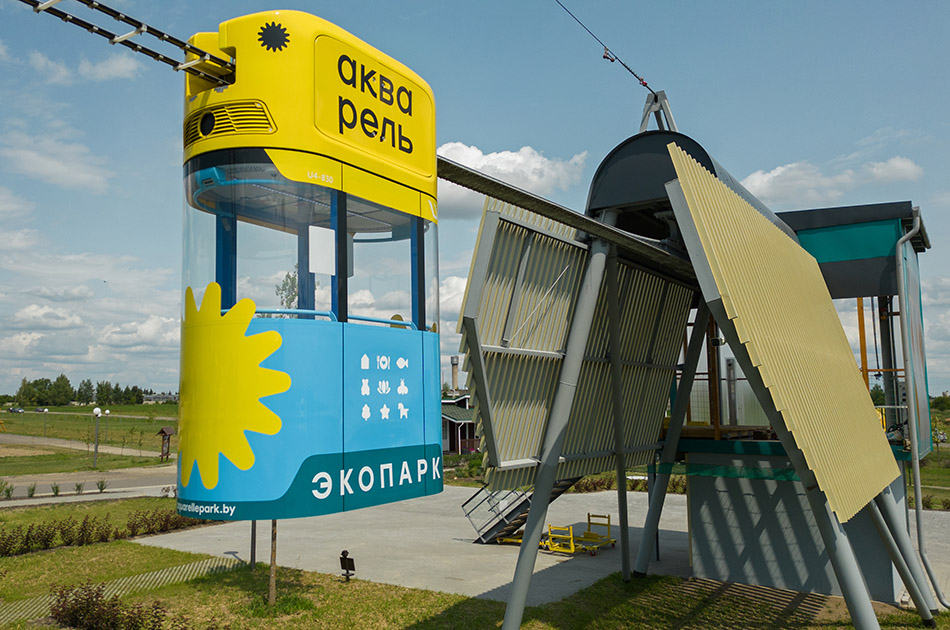
Technical specifications
The uLite is a steel-wheeled electric vehicle developed by UST Inc. It can carry up to 6 people, consuming 4.5 kWh/100 km. The average energy consumption of a conventional electric passenger car is about 14.5 kWh/100 km.
If we talk about the energy consumption for transporting one passenger, the uLite needs only 0.75 kWh. An electric car, which usually carries no more than two people, consumes 10 times more per passenger – 7.25 kWh.
Water Heater
The lack of hot water brings a lot of inconveniences. To avoid these difficulties, people often purchase water heaters. Today, this device can be found in many country houses and apartments. One of the most popular options is a 50-liter water heater, with a power rating of 2.5 kWh.
The energy consumed by the water heater in one hour of operation is enough for the uLite to travel 55 km. In comparison, a conventional electric vehicle will cover about 17 km.
Given that the length of the uLite route in the EcoTechnoPark is around one kilometer, the energy used by the water heater in one hour would allow the uPod to transport 258 people. In a similar situation, an electric vehicle could only transport 34 passengers.
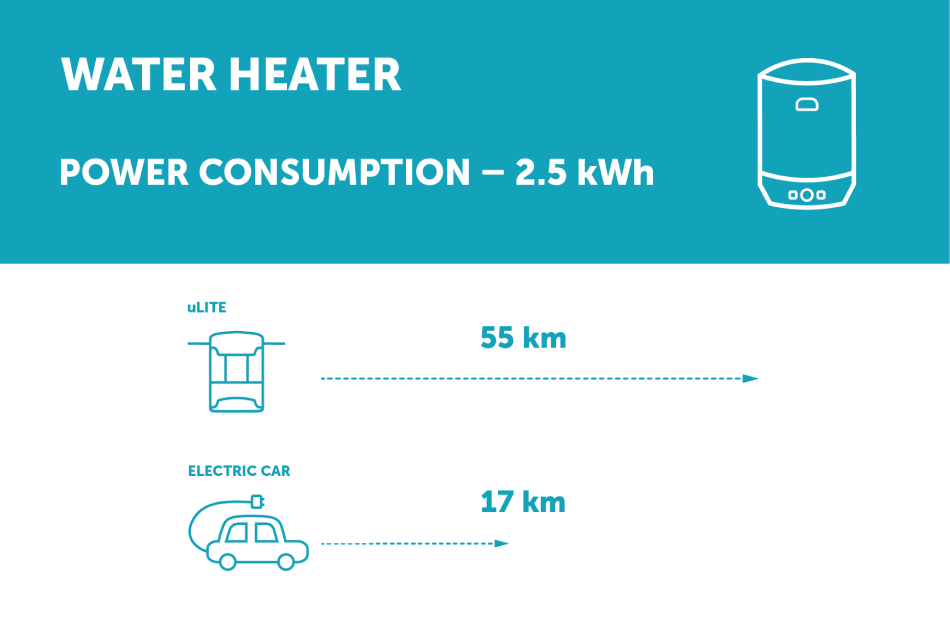
Dishwasher
The standard washing cycle for a dishwasher lasts one hour, with an average power consumption of about 1.02 kWh for built-in models. Thus, the energy consumed by the dishwasher in one hour is enough for uLite to travel approximately 17 km, while a conventional electric vehicle can cover about 7 km. During one hour of the dishwasher’s operation, the uLite can transport 102 people, whereas the electric vehicle can only transport 14 people.
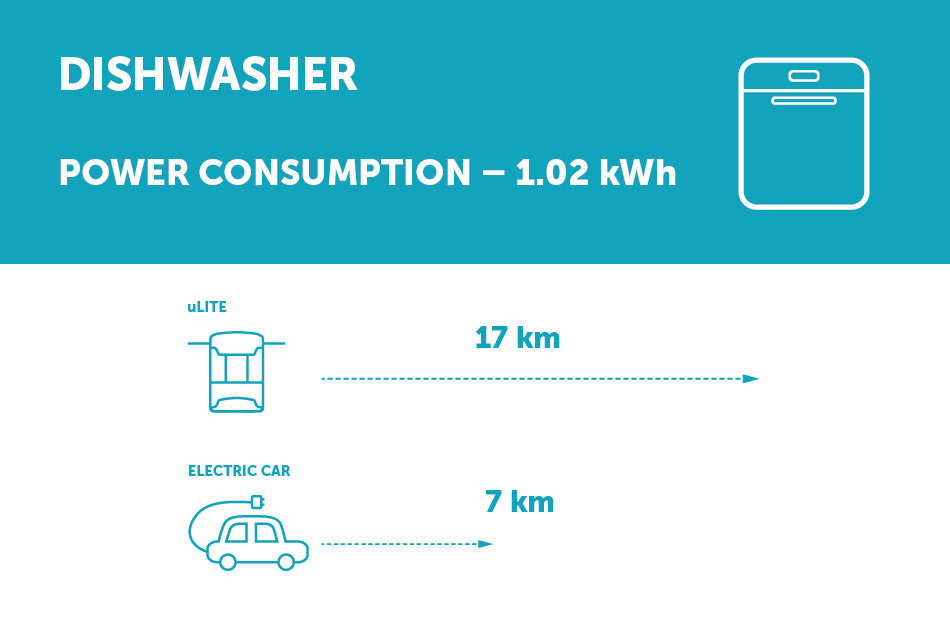
Cooktop
One of the main advantages of a cooktop is its quick heating capability. However, this convenience comes at the cost of high energy consumption. If all four burners are in use, their total power consumption will be 7.4 kWh. In this case, the energy used by the cooktop is enough for uLite to travel 121 km, while a conventional electric vehicle can cover 51 km. During this time, the uLite can transport 726 people, whereas the electric vehicle can only transport 102 passengers.
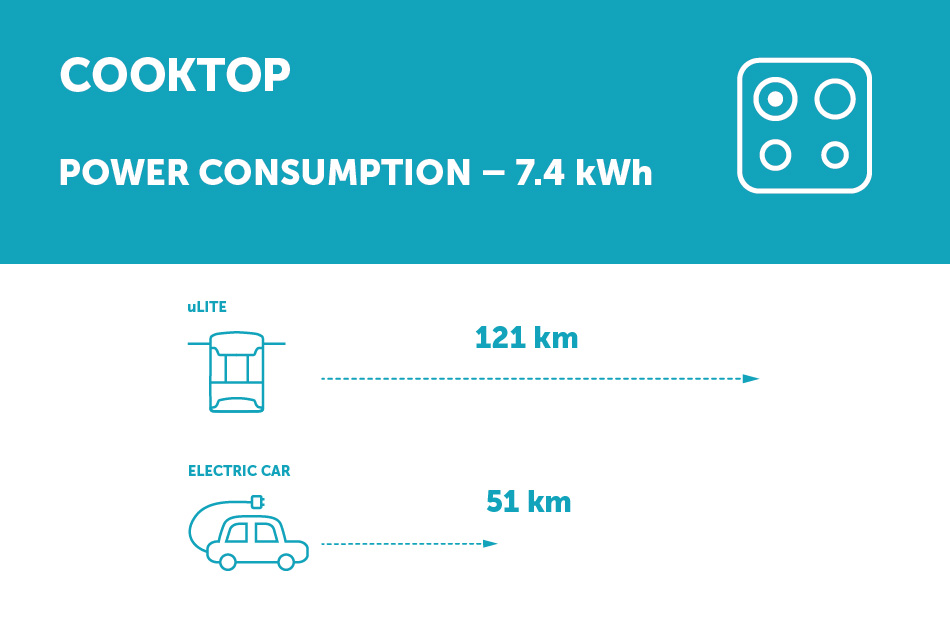
Electric Oven
An electric oven is an essential kitchen appliance for those who love to cook. The average power consumption of such a device is 0.83 kWh. The energy used by the oven in one hour is enough for uLite to travel 14 km, while a conventional electric vehicle can cover 6 km. With this energy, the uLite can transport 84 people, whereas the electric vehicle can only transport 12 passengers.

Washer-Dryer
This appliance cannot be labeled as energy-efficient. Its average energy consumption is 5.78 kWh.
The energy consumed by the washer-dryer in one hour is enough for uLite to travel 95 km, while a conventional electric vehicle can cover 40 km. In terms of passenger capacity, the uLite can accommodate 570 people at full load, while the electric vehicle can only transport 80 passengers.
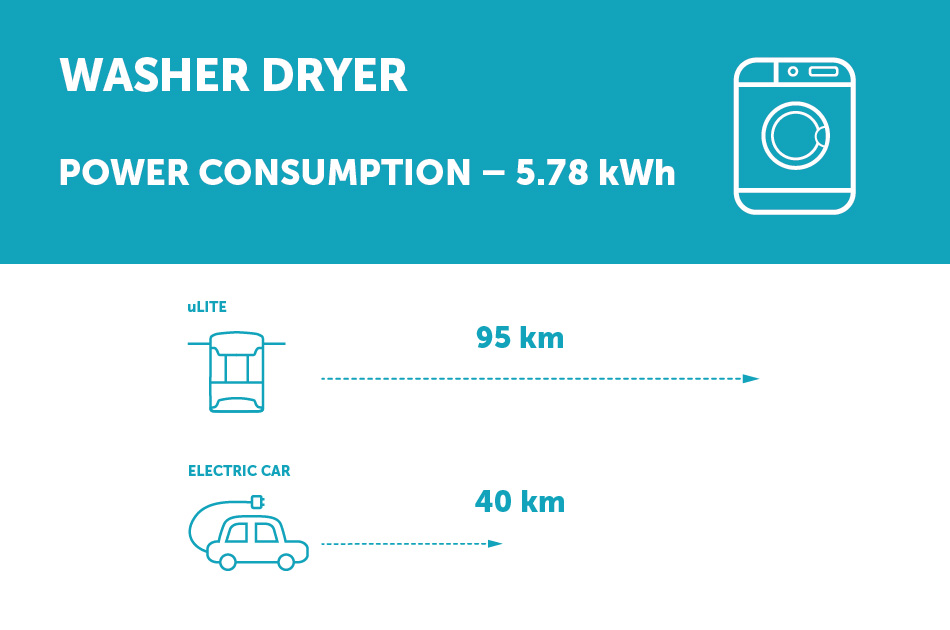
Hair Dryer
This common household appliance consumes about 1.6 kWh. Despite its compact size, it can hardly be described as an economical device.
The energy required for one hour of the hair dryer’s operation is enough for uLite to travel 26 km, while a conventional electric vehicle can cover 11 km. In other words, with the energy consumed by such a small device as a hair dryer, the uLite can transport 156 people. In the case of the electric vehicle, it would only be able to carry 22 passengers.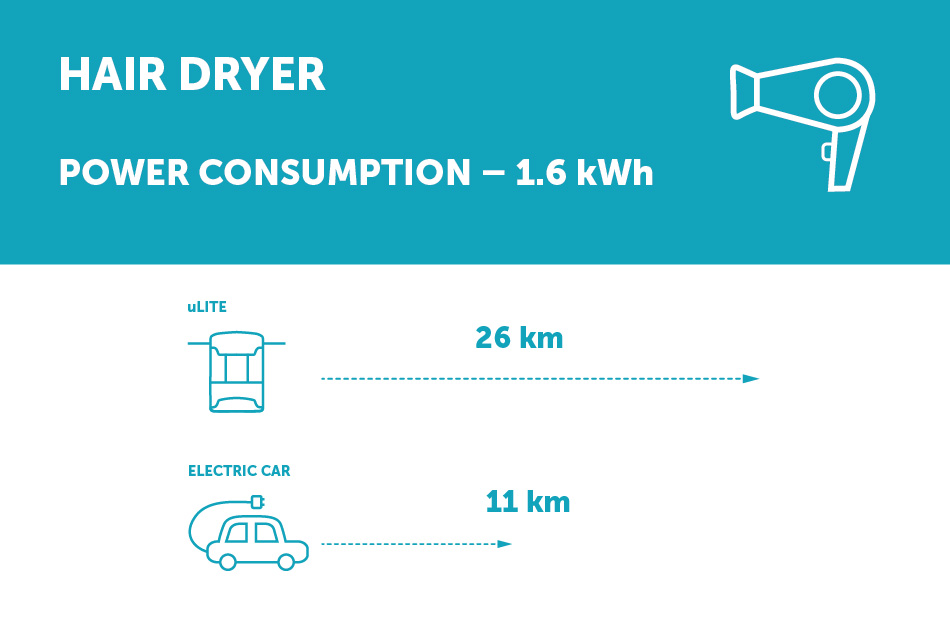
Cost-Effective and Affordable
As we can see, the uLite has very low energy consumption. With the energy required to operate a standard hair dryer, it can travel several dozen kilometers and transport 156 people. Additionally, the uLite is environmentally friendly, requires minimal land allocation, and is safe. The route on which the unmanned vehicle operates is situated 3.5 meters above the ground, eliminating the risk of accidents and the possibility of getting stuck in traffic.
More news

News
7 May 2024
SibSIU recommended implementation of uST technology in Russian regions
SibSIU specialists have analyzed uST transport and infrastructure complexes.
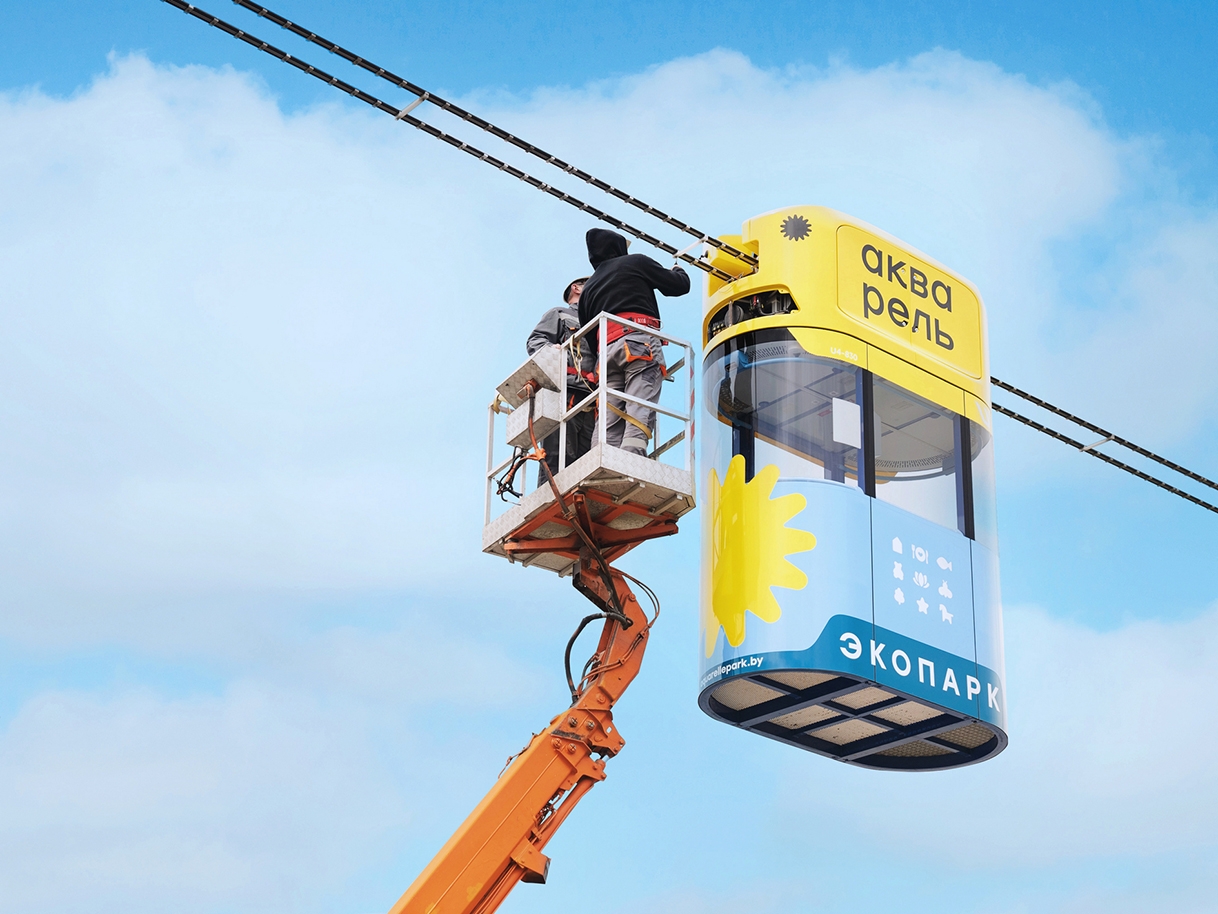
uLite
3 August 2023
The uLite: Next Stage – Transition to Cargo and Passenger Transportation
Activities on the first commercial project of UST Inc. are going on schedule.

News
20 August 2025
UST Digest: New Contracts, Projects and Achievements
This video is dedicated to key events in the activities of Unitsky String Technology.

